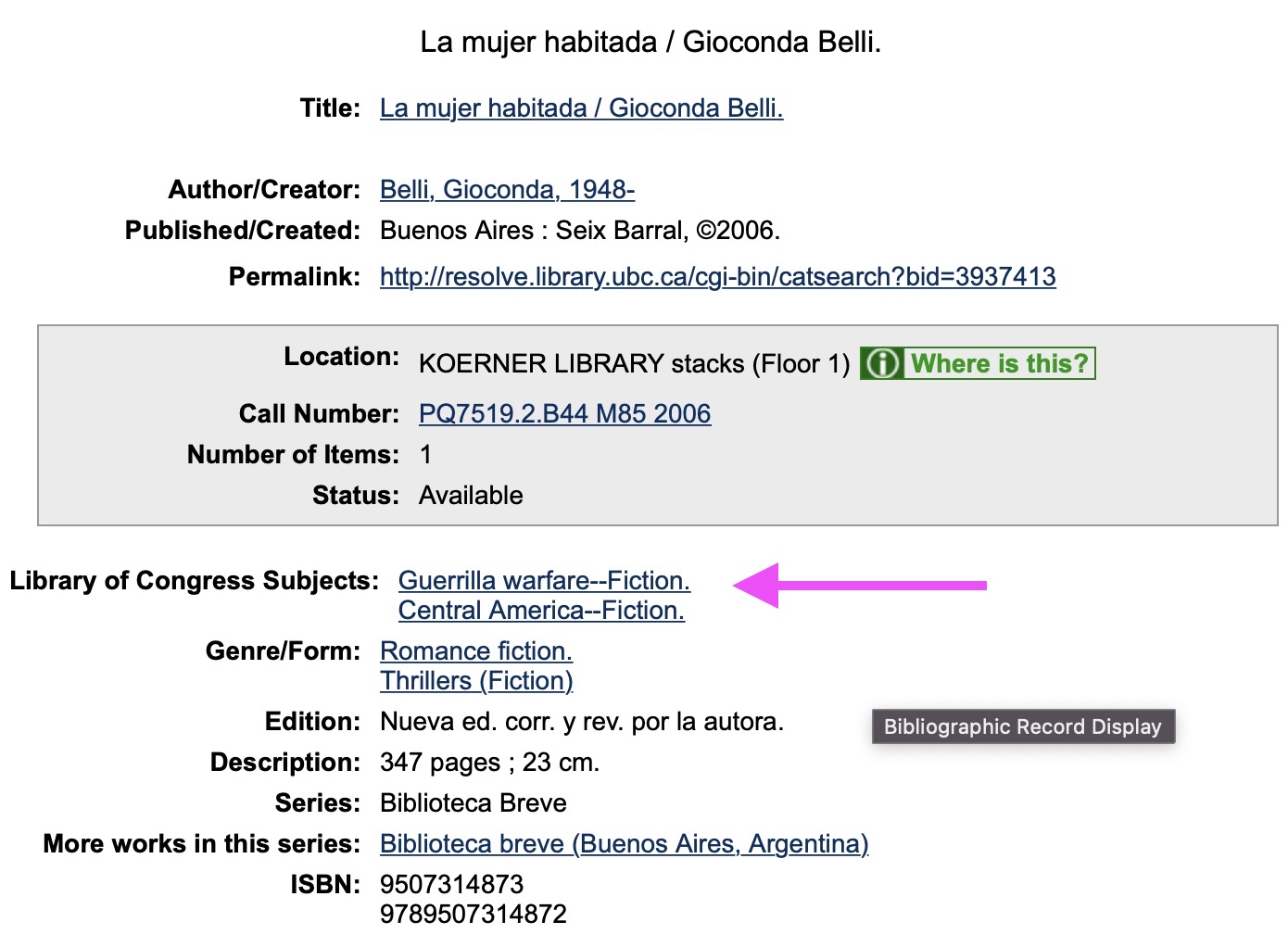Locating New Primary Sources
In the Summer of 2021, I worked with two undergraduate research assistants on a new project related to Central American narrative, for which I was particularly invested in identifying contemporary Guatemalan and U.S.-Guatemalan women writers. That mentorship relationship required that, for the first time, I had to articulate how I locate promising new primary sources for my research. Until that point, I’d never taken note of most of the tricks and tactics I use to find new novels and other pertinent literary works. The exercise turned out to be somewhat surprising, as I didn’t realize how often I turned to informal sources, such as social media or Amazon suggestions, to find relevant works. Below you’ll find the strategies that I shared with with my RAs at the start of the summer.
The Obvious Tricks
Literary Scholars: As you search, remember that, outside of literary studies, “literature” relates broadly to studies written on a particular topic, so using “literature / literatura” may not return specific enough results. To get around this, I use terms like “fiction,” “novels,” “narrative fiction,” “narrative work,” “novelist,” etc.
- Be both obvious and clever with your search terms (novela guatemalteca, novela Guatemala, libro centroamericano, autora guatemalteca, escritora chapina, Central American fiction, novela feminista Guatemala). Remember to try terms both free of quotation marks, as well as with quotation marks. (See the compiling a quality bib post for tips on optimizing your search terms)
- Once you’ve identified your search terms, perform a typical Google search, but also search in Google Scholar.
- Google in both English and Spanish.
The Library
This will sound obvious to many, but perhaps not as much to scholars who were trained in the age of Google: Visiting the physical library is one of the best ways to stumble across interesting new texts.
- Stop by the section with Central American authors you know (e.g., Claudia Hernández) and browse the area to discover new authors.
- Navigate to academic databases (JSTOR, Project Muse) or journals (Chasqui, Revista de Estudios Hispánicos) and input your search terms (#1 above) to find pertienent secondary resources.
- The library website is a fantastic resource for locating new primary texts. For instance, clicking into a search result for a novel by Nicaraguan author Gioconda Belli allows me to click on topics, such as “Central America–Fiction,” which may reveal other pertinent authors.

Mining Bibliographies
- Check out the authors included in relevant anthologies, such as The Wandering Song: Central America Writing in the United States, or those included in encyclopedic volumes, like Literatura Centroamericana. Diccionarios de autores contemporáneos, edited by Jorge Eduardo Arellano.
- Review the bibliographies of publications penned by scholars working in your area. Even if a particular article is on an author that you are already familiar with, sometimes, as part of the lit review, scholars will mention other writers that are contemporary to the author the article is about.
Social Media
Thanks to the efforts of my brilliant research assistants, I have now read fiction by Anabella Giracca, Denise Phé-Funchal, Valeria Cerezo, and Ivanna Chapeta, among many other Guatemalan authors that I wasn’t previously familiar with.